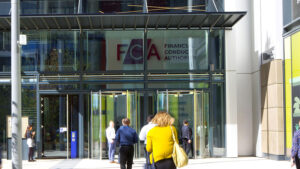A couple of months ago a product was launched by Gilliat, which, while being a high risk investment, offered what we felt to be commensurate potential return for the risks accepted. A very similar product has recently been launched and given that the previous plan proved popular with investors, this one warrants a closer look.
There have been many share-linked plans launched in the past, but it’s rare in the UK market for the potential returns to be in the 30% per annum range which in itself is enough to catch our attention, while also being a strong indication of a high potential risk of no gain or loss. The main difference between the Gilliat plan and the more recently launched Mariana Capital plan is that the former had an annual kick-out, whereas the Mariana one can mature every 6 months after the first year; in most other respects they are the same.
This latest plan from Mariana Capital is linked to the same basket of just three shares. If on any observation date, the prices of all three shares are higher than their initial levels, the investment will mature rewarding investors with their original capital back, plus a substantial gain of 15% for each six-month period the investment has been in force.
The three shares the investment is linked to are Barclays Bank, GlaxoSmithKline and Vodafone. If one of these shares suffers a substantial fall, the investment could track the fall in that share. Additionally, if the counterparty bank, being Morgan Stanley, defaults during the investment term, the investor could lose some or all of their invested capital.
While the 15% potential gain for each six month period held (30% per annum) is very appealing and the companies and counterparty are all large organisations, given that a loss could be dictated by the worst performing of the three shares, it is surely by any definition, a high risk investment. As such, the investment is not likely to be suitable for anything other than a small part of clients’ portfolios.
The risk of a stock-linked plan not producing a return, or producing a loss, is far higher than an index-linked plan, as one share can have a catastrophic effect. No matter how strong or stable the company may be perceived, it’s not difficult to recall the names of a handful of blue chip companies such as BP that have suffered catastrophic falls in the past. While we’re not stock analysts, we feel this plan has a high enough coupon to justify the risks, but we still see it as a speculative investment.
Only hindsight will provide the ultimate answer as to whether this investment is worth the risk and it certainly shouldn’t be used for anything other than speculation capital. Stock-linked plans can be difficult to compare, even similar plans linked to similar shares, as the shares can have vastly different characteristics and correlations to each other. So a plan with three closely correlated shares will offer headline returns and perform entirely differently to a plan linked to uncorrelated shares.
We feel this plan is only attractive due to its headline rate – the exact same plan offering 15% or 18% a year wouldn't spark our interest unless there were significant defensive features allowing the pay-out to be triggered even if the shares fell in value, or a potential compensation coupon if the full pay-out trigger was never achieved. If all things are equal, the potential return should be an indicator of potential risk and looking across all structured products, there are currently many attractive plans on offer.
While there are many nuances that make direct comparisons difficult and potentially flawed, the fact that low-risk deposit based structures linked to the FTSE 100 Index are currently offering up to 5.5% per annum should help to give an indication as to the extent of the additional risk attached to the Mariana plan which offers more than five times as much.







